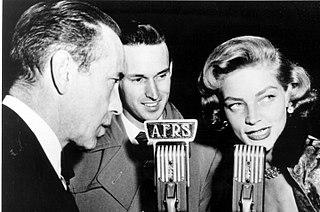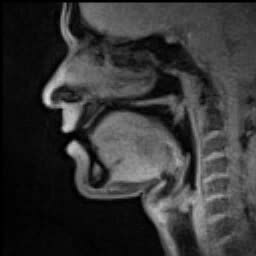Related Research Articles
The term phonation has slightly different meanings depending on the subfield of phonetics. Among some phoneticians, phonation is the process by which the vocal folds produce certain sounds through quasi-periodic vibration. This is the definition used among those who study laryngeal anatomy and physiology and speech production in general. Phoneticians in other subfields, such as linguistic phonetics, call this process voicing, and use the term phonation to refer to any oscillatory state of any part of the larynx that modifies the airstream, of which voicing is just one example. Voiceless and supra-glottal phonations are included under this definition.
Voice analysis is the study of speech sounds for purposes other than linguistic content, such as in speech recognition. Such studies include mostly medical analysis of the voice (phoniatrics), but also speaker identification. More controversially, some believe that the truthfulness or emotional state of speakers can be determined using voice stress analysis or layered voice analysis.

The human voice consists of sound made by a human being using the vocal tract, including talking, singing, laughing, crying, screaming, shouting, humming or yelling. The human voice frequency is specifically a part of human sound production in which the vocal folds are the primary sound source.

The larynx, commonly called the voice box, is an organ in the top of the neck involved in breathing, producing sound and protecting the trachea against food aspiration. The opening of larynx into pharynx known as the laryngeal inlet is about 4–5 centimeters in diameter. The larynx houses the vocal cords, and manipulates pitch and volume, which is essential for phonation. It is situated just below where the tract of the pharynx splits into the trachea and the esophagus. The word 'larynx' comes from the Ancient Greek word lárunx ʻlarynx, gullet, throatʼ.
This is a glossary of medical terms related to communication disorders which are psychological or medical conditions that could have the potential to affect the ways in which individuals can hear, listen, understand, speak and respond to others.
Speech disorders, impairments, or impediments, are a type of communication disorder in which normal speech is disrupted. This can mean fluency disorders like stuttering, cluttering or lisps. Someone who is unable to speak due to a speech disorder is considered mute. Speech skills are vital to social relationships and learning, and delays or disorders that relate to developing these skills can impact individuals function. For many children and adolescents, this can present as issues with academics. Speech disorders affect roughly 11.5% of the US population, and 5% of the primary school population. Speech is a complex process that requires precise timing, nerve and muscle control, and as a result is susceptible to impairments. A person who has a stroke, an accident or birth defect may have speech and language problems.

Laryngitis is inflammation of the larynx. Symptoms often include a hoarse voice and may include fever, cough, pain in the front of the neck, and trouble swallowing. Typically, these last under two weeks.

Bogart–Bacall syndrome (BBS) is a voice disorder that is caused by abuse or overuse of the vocal cords.
A hoarse voice, also known as dysphonia or hoarseness, is when the voice involuntarily sounds breathy, raspy, or strained, or is softer in volume or lower in pitch. A hoarse voice can be associated with a feeling of unease or scratchiness in the throat. Hoarseness is often a symptom of problems in the vocal folds of the larynx. It may be caused by laryngitis, which in turn may be caused by an upper respiratory infection, a cold, or allergies. Cheering at sporting events, speaking loudly in noisy environments, talking for too long without resting one's voice, singing loudly, or speaking with a voice that is too high or too low can also cause temporary hoarseness. A number of other causes for losing one's voice exist, and treatment is generally by resting the voice and treating the underlying cause. If the cause is misuse or overuse of the voice, drinking plenty of water may alleviate the problems.

Speech is the use of the human voice as a medium for language. Spoken language combines vowel and consonant sounds to form units of meaning like words, which belong to a language's lexicon. There are many different intentional speech acts, such as informing, declaring, asking, persuading, directing; acts may vary in various aspects like enunciation, intonation, loudness, and tempo to convey meaning. Individuals may also unintentionally communicate aspects of their social position through speech, such as sex, age, place of origin, physiological and mental condition, education, and experiences.
Spasmodic dysphonia, also known as laryngeal dystonia, is a disorder in which the muscles that generate a person's voice go into periods of spasm. This results in breaks or interruptions in the voice, often every few sentences, which can make a person difficult to understand. The person's voice may also sound strained or they may be nearly unable to speak. Onset is often gradual and the condition is lifelong.
Puberphonia is a functional voice disorder that is characterized by the habitual use of a high-pitched voice after puberty, hence why many refer to the disorder as resulting in a 'falsetto' voice. The voice may also be heard as breathy, rough, and lacking in power. The onset of puberphonia usually occurs in adolescence, between the ages of 11 and 15 years, at the same time as changes related to puberty are occurring. This disorder usually occurs in the absence of other communication disorders.
Vocology is the science and practice of vocal habilitation, or vocal training and therapy. Its concerns include the nature of speech and language pathology, the defects of the vocal tract (laryngology), the remediation of speech therapy, and the voice training and voice pedagogy of song and speech for actors and public speakers.
Godfrey Edward Arnold, born as Gottfried Eduard Arnold, was an Austrian American professor of medicine and researcher. His studies centered on speech, speech disorder and clinical communicology.
Richard Luchsinger (1900–1993) was a Swiss medical doctor who made early contributions to the field of Speech Language Pathology, specifically in "phoniatry" or the study of voice. He was born in Switzerland and specialized in otorhinolaryngology. His most notable contribution to the field of voice was a textbook that he published with Dr. Gottfried E. Arnold. The textbook was originally published in German, however the second edition, published in 1965, was translated into English under the title: Voice-Speech-Language.
Speech and language impairment are basic categories that might be drawn in issues of communication involve hearing, speech, language, and fluency.
Muscle tension dysphonia (MTD) was originally coined in 1983 by Morrison and describes a dysphonia caused by increased muscle tension of the muscles surrounding the voice box: the laryngeal and paralaryngeal muscles. MTD is a unifying diagnosis for a previously poorly categorized disease process. It allows for the diagnosis of dysphonia caused by many different etiologies and can be confirmed by history, physical exam, laryngoscopy and videostroboscopy, a technique that allows for the direct visualization of the larynx, vocal cords, and vocal cord motion.
Aatto Albanus Sonninen was a Finnish physician and speech and language pathologist known for his work in phoniatrics and logopedics.
Videostroboscopy is a high-speed medical imaging method used to visualize the dynamics of human vocal fold vibration.

Hermann Carl Albert Gutzmann, Sr. was a German physician. He is considered the founder of phoniatrics as a medical discipline.
References
- ↑ "Meaning of phoniatrics - Infoplease". InfoPlease.
- ↑ Zehnhoff-Dinnesen, Antoinette am; Wiskirska-Woznica, Bozena; Neumann, Katrin; Nawka, Tadeus (2019-08-15). Phoniatrics I: Fundamentals – Voice Disorders – Disorders of Language and Hearing Development. Springer Berlin Heidelberg. ISBN 9783662467794.
- ↑ "Phoniatrics, the Medical Specialty for Communication Disorders". www.phoniatrics-uep.org. Retrieved 31 January 2015.